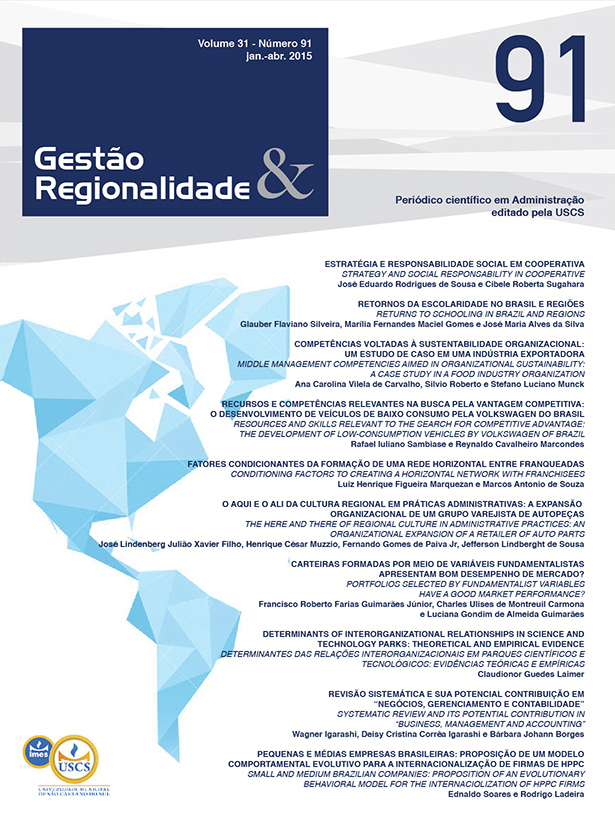DETERMINANTS OF INTERORGANIZATIONAL RELATIONSHIPS IN SCIENCE AND TECHNOLOGY PARKS: THEORETICAL AND EMPIRICAL EVIDENCE
DOI:
https://doi.org/10.13037/gr.vol31n91.2836Resumen
The study aims to identify the factors that determine the formation of interorganizational relationships in the context of science and technology parks. To conduct the study, which consists of qualitative research with multiple case studies, we selected two parks: one located in Brazil and the other in Portugal. The survey's main findings are represented by the theoretical and empirical evidence found in the context of science and technology parks, and the need for reciprocity and legitimacy proved critical to the formation of interorganizational relationships. Although these determinants match the primary theoretical and empirical evidence, other elements may influence the relationship, such as cultural aspects, environmental uncertainty, risk aversion and mistrust.Descargas
Los datos de descarga aún no están disponibles.
Descargas
Publicado
2015-03-27
Número
Sección
Artigos
Licencia
Derechos de autor 2015 Claudionor Guedes Laimer (Autor)

Esta obra está bajo una licencia internacional Creative Commons Atribución-NoComercial-SinDerivadas 4.0.
Autores que publicam nesta revista concordam com os seguintes termos:
- Autores mantém os direitos autorais e concedem à revista o direito de primeira publicação, com o trabalho simultaneamente licenciado sob a https://creativecommons.org/
licenses/by-nc-nd/4.0/, permitindo o compartilhamento do trabalho com reconhecimento da autoria do trabalho e publicação inicial nesta revista. - Autores têm autorização para assumir contratos adicionais separadamente, para distribuição não-exclusiva da versão do trabalho publicada nesta revista (ex.: publicar em repositório institucional ou como capítulo de livro), com reconhecimento de autoria e publicação inicial nesta revista.
- Autores têm permissão e são estimulados a publicar e distribuir seu trabalho online (ex.: em repositórios institucionais ou na sua página pessoal) a qualquer ponto antes ou durante o processo editorial, já que isso pode gerar alterações produtivas, bem como aumentar o impacto e a citação do trabalho publicado (Veja O Efeito do Acesso Livre).
Cómo citar
DETERMINANTS OF INTERORGANIZATIONAL RELATIONSHIPS IN SCIENCE AND TECHNOLOGY PARKS: THEORETICAL AND EMPIRICAL EVIDENCE. (2015). Gestão & Regionalidade, 31(91). https://doi.org/10.13037/gr.vol31n91.2836




















